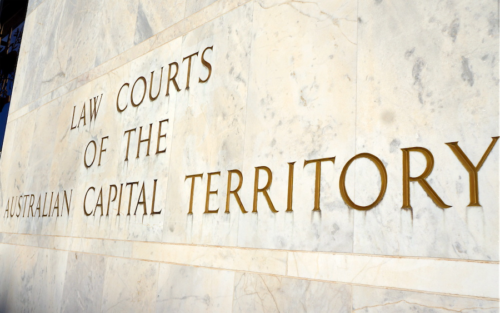Reader DAVID JONES, of Duffy leads this week’s burst of letters with a revelation that leather couches may not always be what they seem to be…
LET me start by saying “CityNews” is great reading most of the time. So I was surprised to see Helen Musa use the absurd term “vegan leather” in her article “Car model inspires Lilli’s out-of-the-box ideas” (CN June 24).
 There is leather and there is vinyl or plastic or some other petrochemical derivative that looks like leather.
There is leather and there is vinyl or plastic or some other petrochemical derivative that looks like leather.
This notion of non-animal leather is preposterous; it is natural or it is a man-made chemical compound. Doesn’t sound so nice to say “chemical compound”, not “green” and fluffy, but it is accurate, non-misleading and simple, unlike the “left-leaning” vague new titles being used nowadays. People need the truth in advertising, not some wordsmiths playing with ideas to confuse people.
I went to buy a leather lounge only to find, after I paid for it, that half of it was “pleather”! What is pleather? Turned out it was vinyl sides and back and I was charged a hefty premium to upgrade to a 100 per cent leather lounge.
The use of these terms emulates the outcomes in the book “1984”, where the language was dumbed down so the Proles did not have to think and I believe the practice should be banned, particularly in a news article.
David Jones, Duffy
Leave carbon emissions alone
SOME worry the government is not doing enough to reduce carbon emissions, but I’m in the other camp; I wish the government would do absolutely nothing because we would all be better off.
While Australia hobbles itself with expensive renewables to solve a miniscule emissions footprint, the world is moving to coal for reliable and cheap energy.
Literally hundreds of coal-fired power stations are being built worldwide, and in the last decade, global coal use has increased dramatically and remains the source of 40 per cent of electricity production.
If the government must do something, perhaps it could focus on the only real alternative to coal for cheap and reliable electricity generation. Nuclear.
Peter Mitchell, Tuggeranong
Slow the tram plans
THE NCA’s apparent rejection of Commonwealth Avenue Bridge for light rail stage 2 (Civic to Woden), and talk of an adjacent tram-only bridge, shows the need for a moratorium on the Civic to Capital Hill section.
An adjacent bridge would be out of character with all designs for the Central National Area, going right back to Griffin.
An in-situ replacement bridge would be at odds with the recent Commonwealth decision to commit millions to renovate (but not for trams) the existing one – while rightly retaining its iconic bifurcated form, matching its Kings Avenue counterpart.
The current Civic to Capital Hill section has other problems, including its “stultifying orthodoxy”, the costly rearrangement of City Hill south, the destruction of the cultural landscape of Commonwealth Avenue, the imposition of property development along it, and expensive in-ground electricity.
A moratorium could precipitate a more captivating Civic to Capital Hill route.
Briefly, it could involve the existing tree-lined northern road reserve of Edinburgh Avenue (serving New Acton, and the existing Parkes Way pedestrian bridge to Acton Foreshore, and Commonwealth Park); on to, say, McCoy Circuit and Liversidge Street in the ANU; along the southern shore of Acton Peninsula; across a new yacht-friendly, tram/pedestrian/bike bridge (reflecting Griffin’s missing third crossing there) to the narrowest part of Lennox Gardens; along Flynn Drive to State Circle; and on to Woden as currently planned.
Jack Kershaw, Kambah
Rates pay for roads, too
I APPRECIATE Colin Lyons (Letters, CN June 24) went to a great deal of trouble comparing rates in Canberra and Brisbane.
However, his comparison has one very significant flaw.
In the ACT, all our major roads are paid for through our rates. In Brisbane roads (and even bridges) have tolls. It is not uncommon for Brisbane families to pay $50 or $100 a week in tolls.
Of course rates in Canberra need to be a little higher as we get far more.
Canberra may not be a demi-paradise, but it is a far cheaper place to live than any other capital city in Australia.
Noel Baxendell, Macgregor
Supply charges are ‘highway robbery’
IT seems to be a trend in the ACT. The rich get richer and, regardless of what government is in power, not one of them listens to what the people want.
The old saying “I’m okay, Jack; bugger you” seems to be relevant when it comes to the cost of living eg rates, electricity, gas and water.
Every utility cost seems to increase yearly, but never any improvement to warrant the increase.
Here are ours: electricity, a quarterly supply charge ($88.86); gas, quarterly supply charge ($77.93); water, quarterly supply charge ($36.53) and sewerage, quarterly supply charge ($130.26).
All of the above are every quarter on top of all usage costs. This is highway robbery!
People on really high wages can manage these costs but those on the basic wage must be finding it difficult. We are in our eighties and on an aged pension, and we do get discounts on our usages but NOT on supply fees and not on water costs. We have to ask for such discounts and review our contract every 12 months. Those that are unable to email or go online in these matters are stumped.
Les and Claire Eames, Higgins
Time to probe the ABC
MANY people perceive the ABC (Awfully Biased Organisation) as left-leaning.
I believe it pays scant regard to its Charter and Broadcasting Act, as it indulges in journalistic sensationalism, either ignoring the facts or, worse, distorting them when it suits the ABC politically.
This is not acceptable, particularly as it is fully funded by the taxpayer to the tune of one billion dollars a year.
It is risible that programs such as “Q&A” and its blatantly biased, hand-picked audience and panel are allowed to continue to be shown.
It’s about time we set up a Royal Commission to investigate how it is run as the ABC, once well respected as our “national broadcaster “, has now become our “national disaster”.
Mario Stivala, Belconnen
Considering the age of reason
I HOPE that the consideration to be given to raising the age of criminal responsibility from 10 to 14 years gives due weight and importance to the fact that almost universally it is held that around the age of seven, give or take a year, children enter a developmental phase known as the age of reason.
“The age of reason refers to the developmental cognitive, emotional, and moral stage in which children become more capable of rational thought, have internalised a conscience, and have better capacity to control impulses (than in previous stages),” explains Dana Dorfman, PhD, psychotherapist and co-host of a US media program.
Most paediatricians agree that it is the time of life when one begins to be able to distinguish right from wrong, and in one program segment she supports this general paediatric view, which also holds that it is the age when children begin to realise that other people have their own feelings that might not match his or hers. None of this is new – as the first known use of the term “age of reason” was in 1650AD.
Colliss Parrett, Barton
Sharing the land-sale disappointment
I SHARE the disappointment of columnist Paul Costigan (CN, June 17) over the ACT Greens’ back down over ACT Labor’s land sales.
Perhaps it is another example of their “new normal” and we should get used to it?
Greg Cornwell, Yarralumla
Flying success of ‘green hydrogen’
IN CN, June 17, I wrote about the future of electric vehicles. The latest trend in the aviation industry is aircraft with gas-turbine engines using “green hydrogen” (hydrogen produced by electrolysis with renewable energy).
According to the International Energy Agency, passenger and freight aircraft with these engines were responsible for about 3.5 per cent global total CO2 emissions in “pre-Covid” 2019. This is a significant contribution to any effort to reduce CO2 emissions to net zero by 2035. Using hydrogen as an aircraft fuel produces (of course) no CO2, just H2O (water vapour).
Another benefit of using liquid hydrogen as an aircraft fuel is its weight. Jet turbine fuel (Avtur) is 775 to 841 grams per litre (g/L); liquid hydrogen, at 71 g/L, is less than a tenth of the lightest Avtur. Therefore, hydrogen-powered aircraft can carry much more fuel, and have a much greater potential range, than traditional gas-turbine aircraft — all with zero pollution by global-warming gases.
Douglas Mackenzie, Deakin
Who can be trusted?
In a world of spin and confusion, there’s never been a more important time to support independent journalism in Canberra.
If you trust our work online and want to enforce the power of independent voices, I invite you to make a small contribution.
Every dollar of support is invested back into our journalism to help keep citynews.com.au strong and free.
Thank you,
Ian Meikle, editor





Leave a Reply